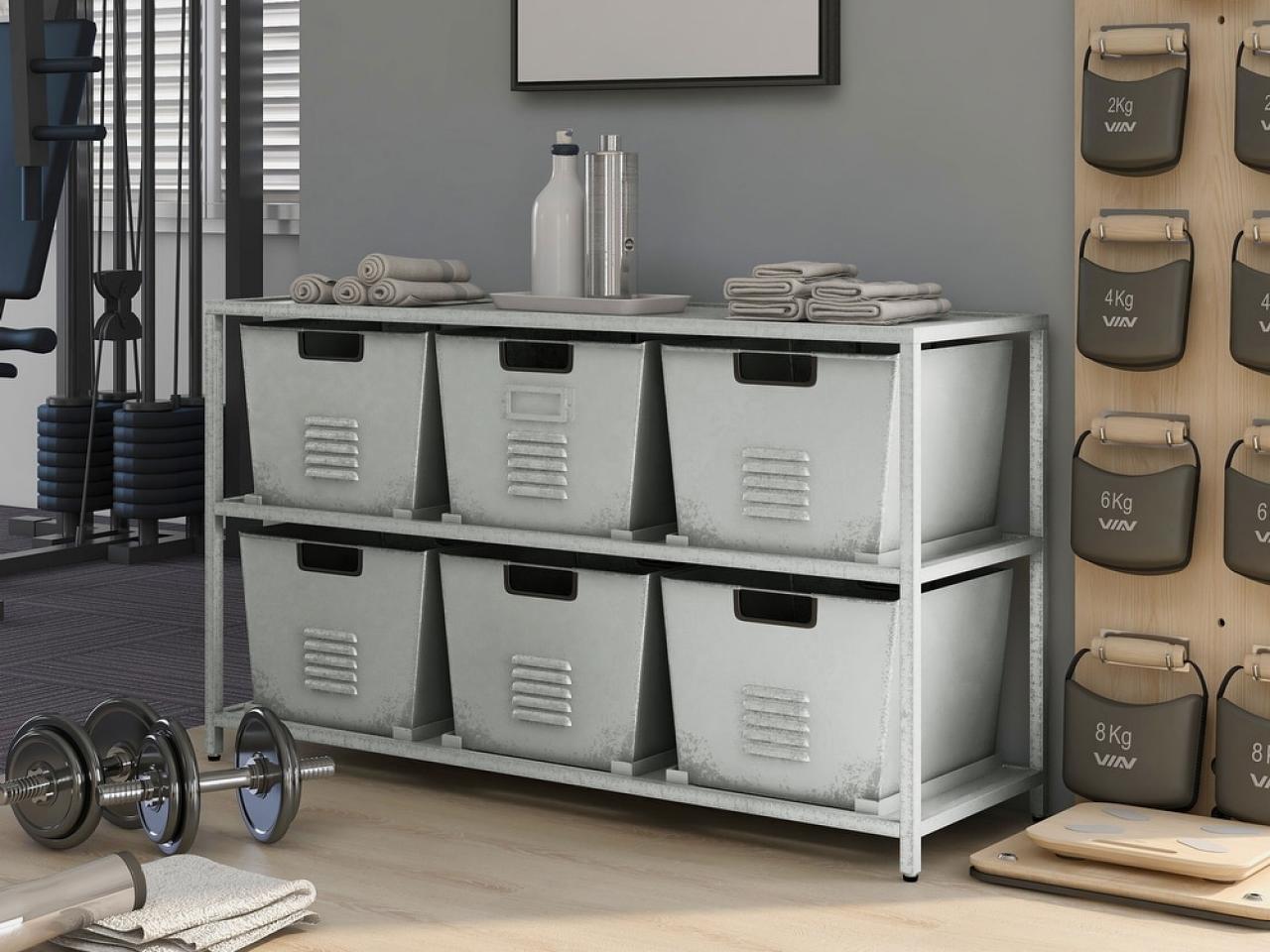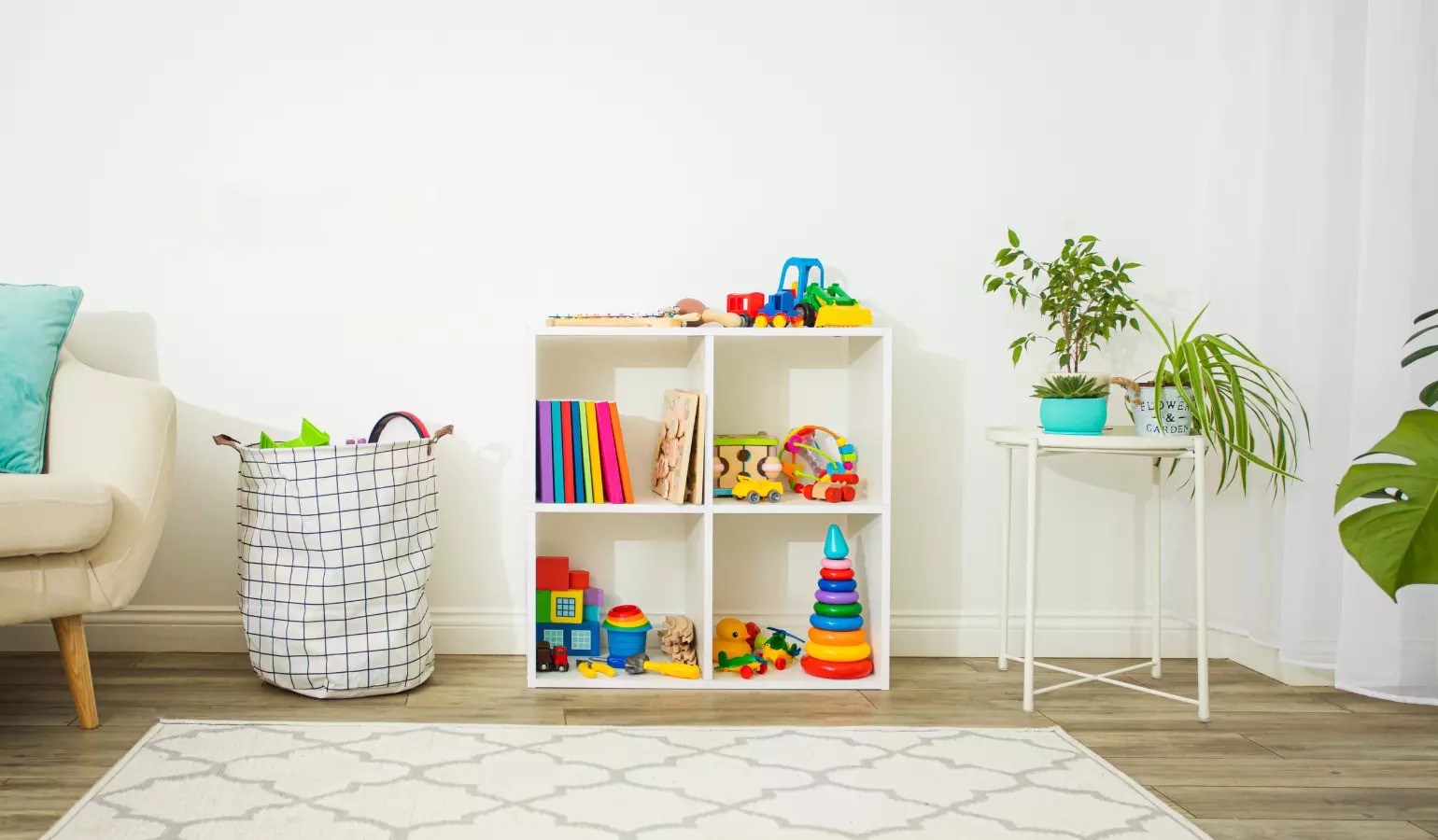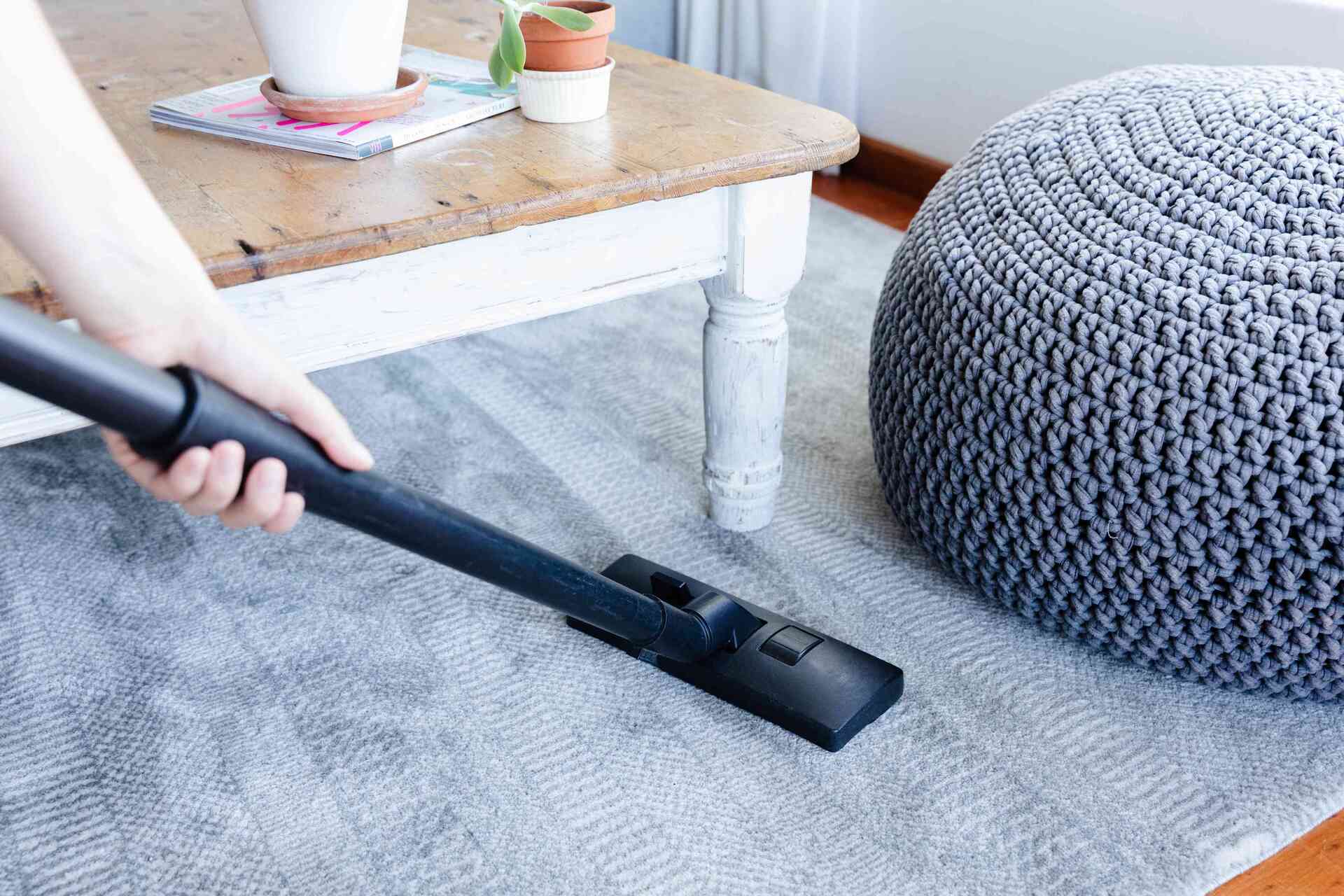

Articles
How To Store Living Room Blankets
Modified: February 22, 2024
Learn how to store and organize your living room blankets with these helpful articles. Find practical tips and creative solutions to keep your blankets neat and easily accessible.
(Many of the links in this article redirect to a specific reviewed product. Your purchase of these products through affiliate links helps to generate commission for Storables.com, at no extra cost. Learn more)
Introduction
Blankets are a cozy and essential part of any living room. They not only provide warmth and comfort but also enhance the visual appeal of the space. However, during certain seasons or when redecorating, you may find it necessary to store your living room blankets temporarily. Properly storing the blankets can help protect them from damage and preserve their quality for future use.
In this article, we will guide you through the process of storing your living room blankets effectively. From assessing and cleaning the blankets to choosing storage solutions and maintaining their condition, we’ve got you covered. Follow these simple steps to ensure your blankets remain in pristine condition and are ready for use whenever needed.
Key Takeaways:
- Properly storing living room blankets involves assessing, cleaning, and folding them before choosing suitable storage solutions. Regular maintenance is essential to ensure blankets remain fresh and protected.
- Utilize vacuum-sealed bags, under-bed storage, or organized closets to maximize space and keep living room blankets stored safely. Regularly check for pests or mold to maintain freshness.
Read more: How To Store Blankets In Living Room
Step 1: Assessing the Blankets
The first step in storing your living room blankets is to assess them. Start by deciding which blankets you want to store and which ones you want to keep accessible. This may depend on factors such as seasonality, frequency of use, or personal preference.
Once you have identified the blankets you want to store, it’s important to check them for any damage or stains. Inspect each blanket carefully, looking for tears, holes, or loose threads. If you come across any damaged blankets, consider getting them repaired before storing them to prevent further damage.
In addition to damage, check for any stains on the blankets. Sometimes, stains may go unnoticed when the blankets are in use but become more visible when stored for a longer period. If you spot any stains, it’s recommended to clean the blankets before storing them.
By assessing your blankets and addressing any necessary repairs or cleaning, you can ensure that they remain in good condition during storage, extending their lifespan and maintaining their quality for future use.
Step 2: Cleaning the Blankets
Before storing your living room blankets, it’s important to clean them thoroughly to remove dirt, odors, and stains. The cleaning method will depend on the type of blankets and any specific care instructions provided by the manufacturer. Here are a few steps to help you clean your blankets effectively:
1. Identify proper cleaning instructions: Check the labels or care tags attached to your blankets for any specific cleaning instructions. Some blankets may be machine washable, while others may require dry cleaning or specialized treatment.
2. Laundering or dry-cleaning the blankets: If your blankets are machine washable, follow these steps:
- Sort the blankets: Separate the blankets based on color and fabric type. Washing lighter and darker colors separately can prevent color bleeding.
- Use the right detergent: Choose a mild detergent suitable for your blankets’ fabric type. Avoid using bleach or harsh chemicals that could damage the fibers.
- Select the appropriate wash cycle: Follow the care instructions and set your washing machine to the recommended cycle and water temperature.
- Handle delicate fabrics with care: If you have delicate or sensitive blankets, consider using a gentle cycle or placing them inside a mesh laundry bag for added protection.
- Dry your blankets properly: Air-dry your blankets if the care instructions recommend it or use a low heat setting in the dryer. Avoid high heat settings that can shrink or damage the fabric.
If your blankets require dry cleaning, it’s best to take them to a professional cleaner. They have the expertise and equipment to handle delicate fabrics and ensure proper cleaning without causing any damage.
By following these cleaning steps, you can remove any dirt or stains from your blankets, leaving them fresh, clean, and ready for storage.
Step 3: Folding Techniques
Properly folding your living room blankets is essential to maximize storage space and prevent unnecessary wrinkles or creases. Here are two folding methods to consider:
1. Basic folding method: Start by spreading the blanket flat on a clean surface. Fold it in half lengthwise, bringing one end to meet the other. Smooth out any wrinkles and align the edges. Next, fold the blanket in half widthwise, folding the top end down to meet the bottom. Again, smooth out any wrinkles and ensure all edges are aligned. Finally, fold the blanket into thirds or quarters, depending on the size and thickness, until it forms a neat rectangle or square shape. This method works well for most blankets and is easy to store in boxes or bins.
2. Alternatives for bulkier blankets: If you have bulkier blankets such as knitted or quilted ones, the basic folding method may not be suitable. In this case, consider these alternatives:
- Rolling: Rather than folding, roll the blanket tightly, starting from one end. This method helps preserve the bulkier texture of the blanket and prevents excessive creasing.
- Hanging: If you have enough space in your storage area, you can hang your large blankets on sturdy hangers or hooks. This method is particularly useful for heavy blankets, as it prevents them from being compressed and maintains their shape.
Choose the folding technique that works best for your blankets and the available storage space. Remember to secure the folded blankets with rubber bands or ribbon ties to keep them in place and prevent them from unfolding during storage.
By folding your blankets properly, you can reduce bulk, optimize storage space, and keep them neat and tidy for future use.
Consider using a decorative storage basket or ottoman to keep living room blankets easily accessible yet neatly organized. This not only adds to the decor but also keeps the space clutter-free.
Step 4: Choosing Storage Solutions
Once you have assessed, cleaned, and folded your living room blankets, it’s time to choose the right storage solutions. Consider the following factors when selecting containers or bags:
1. Evaluating available storage space: Take stock of the available storage space in your home. Determine if you can allocate a specific area, such as a closet, cabinet, or under-bed space, for storing your blankets. This will help you determine the size and type of storage solutions needed.
2. Selecting appropriate containers or bags: There are various options for storing blankets, including plastic bins, fabric-covered boxes, vacuum-sealed bags, and sturdy canvas bags. Choose containers or bags that are spacious enough to accommodate your folded blankets without overly compressing them. Opt for durable materials that provide protection from dust, moisture, and pests.
Vacuum-sealed bags are particularly useful as they minimize the storage space required by removing excess air. Place the folded blankets inside the bag, seal it, and use a vacuum cleaner to suck out the air. This method helps keep the blankets compact and protected from potential damage.
If you prefer using boxes or bins, consider using fabric-covered options to provide extra protection and a visually appealing touch. Ensure the containers have lids that fit securely to prevent dust or pests from getting in.
Canvas bags are another convenient option for storing blankets. They are lightweight, easy to carry, and breathable, allowing airflow to prevent musty odors or mildew from forming. Look for bags with handles for better portability.
Whichever storage solution you choose, label each container or bag with the type or season of blankets stored inside. This will make it easier to locate specific blankets in the future without having to open and search through multiple containers.
By evaluating your available storage space and selecting appropriate containers or bags, you can effectively store your living room blankets while keeping them protected and organized.
Read more: How To Store Throw Blankets In Living Room
Step 5: Storing the Blankets
Now that you have chosen your storage solutions, it’s time to store your living room blankets efficiently. Consider these methods for storing your blankets:
1. Using vacuum-sealed bags: If you opted for vacuum-sealed bags, place your folded blankets inside the bags and seal them tightly. Use a vacuum cleaner to remove the excess air, compressing the blankets and creating a compact package. This method not only saves space but also provides airtight protection against dust, moisture, and pests. Store the vacuum-sealed bags in a cool, dry place away from direct sunlight.
2. Utilizing under-bed storage: Under-bed storage is an excellent option for saving space and keeping your blankets easily accessible. Slide the folded blankets into storage containers specifically designed to fit under the bed. Make sure the containers are sturdy and have lids to protect against dust and pests. Alternatively, you can use vacuum-sealed bags and store them directly under the bed.
3. Organizing blankets in closets or cabinets: If you have spare shelves or ample space in your closets or cabinets, designate a specific area for your blanket storage. Fold the blankets neatly and place them on the shelves or in fabric-covered boxes. This method works well for blankets that you want to keep within easy reach or display as part of your home décor. If you’re storing blankets in cabinets, consider using breathable cotton or linen storage bags to protect them.
Regardless of the storage method you choose, make sure to place the blankets in a clean and dry environment. Avoid storing them in basements, attics, or areas prone to temperature fluctuations or excess humidity, as these conditions can lead to mold or mildew growth.
Remember to stack or arrange the storage containers or bags in a way that allows easy access to the blankets you may need, without disrupting the entire storage area. This will save you time and effort when retrieving or adding blankets to the storage.
By utilizing vacuum-sealed bags, under-bed storage, or organizing blankets in closets or cabinets, you can maximize space and keep your living room blankets stored safely and conveniently.
Step 6: Regular Maintenance and Care
Regular maintenance and care are crucial to ensure that your stored living room blankets remain in good condition. Follow these steps to keep them fresh and protected:
1. Refreshing stored blankets: Every few months, take out your stored blankets and give them a gentle shake to fluff them up and prevent any flattened areas. This will help maintain their loft and softness. If the blankets feel a bit stale, you can hang them outside on a sunny day, allowing them to air out and absorb the fresh air.
2. Periodically checking for pests or mold: While stored, blankets are susceptible to pests, such as moths or silverfish, and mold growth in humid environments. Regularly inspect your storage area for any signs of pests or mold. Look for small holes in the blankets or evidence of insect activity, such as larvae or webbing. If you notice any signs, take immediate action to address the issue. Consider using natural pest deterrents, such as lavender sachets or cedar blocks, to keep pests at bay.
To prevent mold growth, ensure the storage area is well-ventilated and free from excessive moisture. If you live in a humid climate, you may want to place moisture-absorbing products, such as silica gel packets or dehumidifiers, in the storage containers or bags to prevent dampness. If you discover any mold on the blankets, it’s important to address it promptly. Clean the affected area using appropriate mold-fighting methods and ensure the blankets are completely dry before returning them to storage.
Regularly check your stored blankets throughout the year to catch any issues early and take the necessary steps to prevent further damage.
By refreshing your stored blankets and periodically checking for pests or mold, you can maintain their freshness and ensure that they are ready for use whenever you need them.
Conclusion
Storing your living room blankets properly is essential for preserving their quality and ensuring they remain in good condition. By following the steps outlined in this guide, you can store your blankets effectively and keep them ready for future use.
Start by assessing the blankets and selecting the ones you want to store. Check them for any damage or stains, and address any necessary repairs or cleaning before storing them.
Cleaning the blankets is an important step to remove dirt, odors, and stains. Identify the proper cleaning instructions and launder or dry-clean the blankets accordingly.
When folding the blankets, use the basic folding method or alternative techniques for bulkier blankets. Choose storage solutions such as vacuum-sealed bags, under-bed storage containers, or organized closets and cabinets to maximize space and protect the blankets.
Regular maintenance and care are crucial. Refresh the stored blankets periodically by giving them a gentle shake and allowing them to air out. Keep an eye out for pests or mold, inspecting the storage area and taking necessary actions if any issues are detected.
In conclusion, by dedicating a little time and effort to store your living room blankets properly, you can extend their lifespan and ensure they remain cozy and fresh for years to come. Following these steps will help you keep your blankets organized, protected, and ready to provide warmth and comfort whenever you need them.
Frequently Asked Questions about How To Store Living Room Blankets
Was this page helpful?
At Storables.com, we guarantee accurate and reliable information. Our content, validated by Expert Board Contributors, is crafted following stringent Editorial Policies. We're committed to providing you with well-researched, expert-backed insights for all your informational needs.















0 thoughts on “How To Store Living Room Blankets”